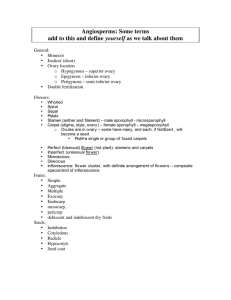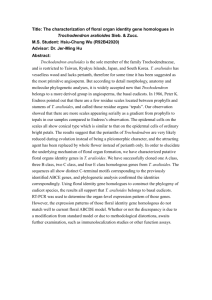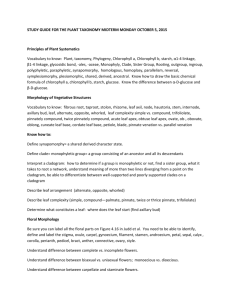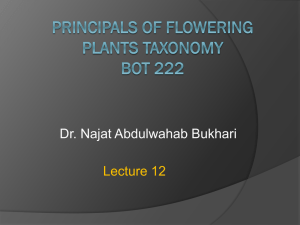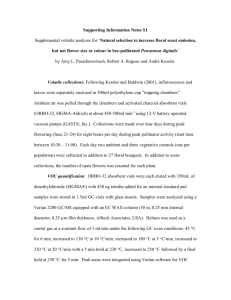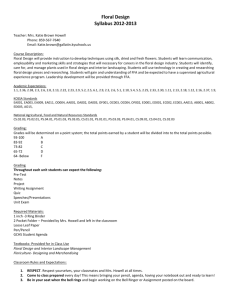Introduction to Floral Formulas * the Everett Version
advertisement
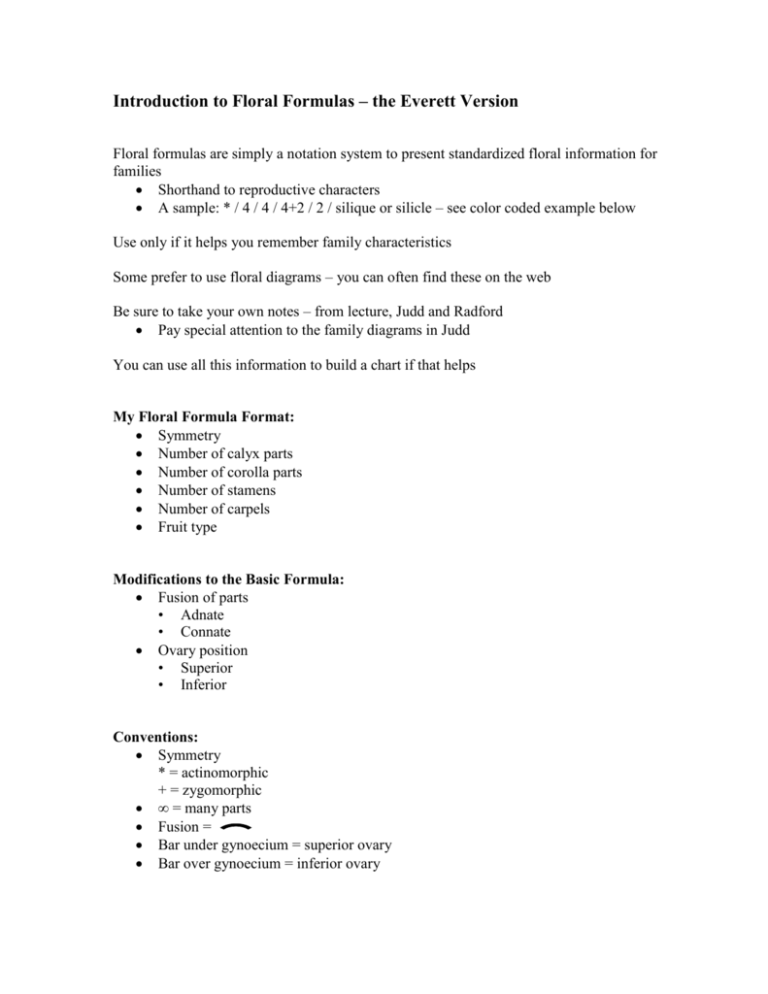
Introduction to Floral Formulas – the Everett Version Floral formulas are simply a notation system to present standardized floral information for families Shorthand to reproductive characters A sample: * / 4 / 4 / 4+2 / 2 / silique or silicle – see color coded example below Use only if it helps you remember family characteristics Some prefer to use floral diagrams – you can often find these on the web Be sure to take your own notes – from lecture, Judd and Radford Pay special attention to the family diagrams in Judd You can use all this information to build a chart if that helps My Floral Formula Format: Symmetry Number of calyx parts Number of corolla parts Number of stamens Number of carpels Fruit type Modifications to the Basic Formula: Fusion of parts • Adnate • Connate Ovary position • Superior • Inferior Conventions: Symmetry * = actinomorphic + = zygomorphic ∞ = many parts Fusion = Bar under gynoecium = superior ovary Bar over gynoecium = inferior ovary Example: * / 4 / 4 / 4+2 / 2 / silique or silicle symmetry sepals petals androecium gynoecium/ovary position – note syncarpous + superior ovary fruit Brassicaceae – the mustard family

